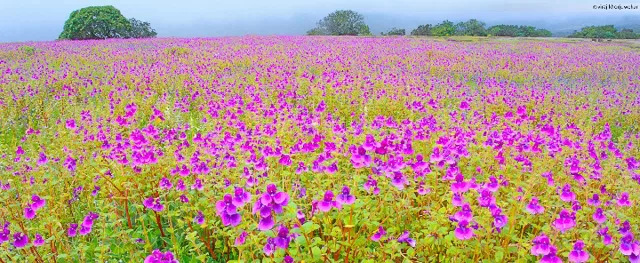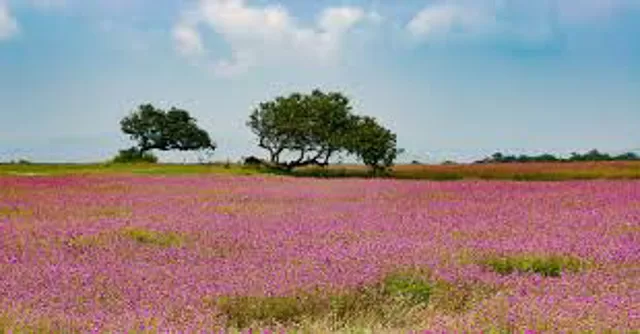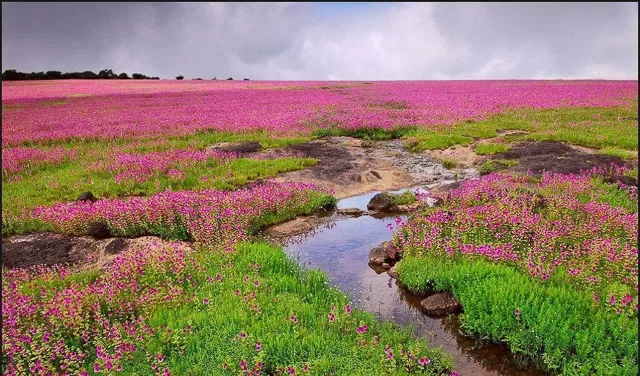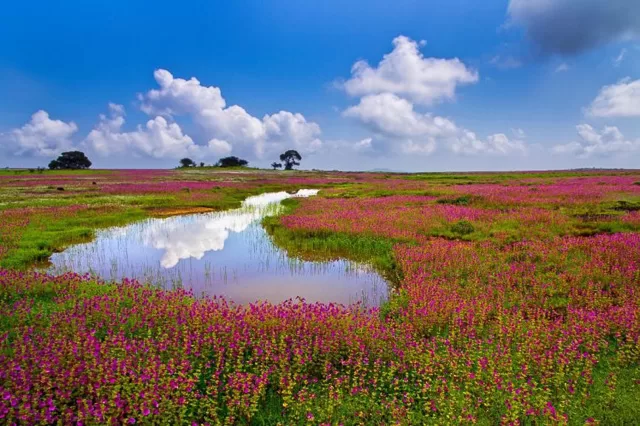About
Top Experiences
Type of Journey
Subscribe to newsletter and stay updated
Read about our travel expeditions, new destinations, new pictures, latest trip schedules
Kaas Plateau, locally known as the Kaas Pathar, is located in the Sahyadri Ghat ranges, in proximity to Sahara City in Maharashtra. Covered in colorful flowers, the plateau covers an area of 10 square kilometers. During monsoons, the Kaas Valley turns into the “valley of flowers” and gains massive tourist attractions. People come to see the different kinds of flowers; the scenery often has a tranquil effect on its visitors, who are mesmerized by its sheer beauty. You can encounter a variety of wildflowers from August to September. You’ll find the tree leaves turning a vibrant shade of red in late March. The Kaas Plateau has been officially declared a Biodiversity World Heritage Site by UNESCO.
Nature is at its best in this part of Maharashtra. You will encounter a variety of wildflowers from August to September. On the other hand, the leaves of trees turn a beautiful red color in late March.
OVERVIEW
Location: Satara District, Maharashtra, India
Nearest Airport: Pune airport
How to reach: 3 hours from Bagdogra airport
Famous for: Valley of flowers during monsoon
Best time to visit: September to October
WHAT TO SEE
Flora: orchids
shrubs such as the Karvy
carnivorous plants such as Drosera Ind
The Kaas Plateau is indeed unique in its way, but that has a lot to do with how different the Western Ghats are. Instead of being true mountains, the Western Ghats are essentially just the faulted edges of the Deccan Plateau. Most people believe that these faulted edges were formed around 150 million years ago when the ancient supercontinent of Gondwana broke away to form different regions and land masses. Fast forward to a gigantic volcanic eruption a couple of millions of years later, which led to the formation of the igneous Deccan Traps as well as the formation of the northern third of the Western Ghats. The Kaas Plateau is also located on the Western Ghats itself, as mentioned before. The Western Ghats are prone to sufficient rainfall, often as high as 150 inches (2500 mm). It is attributed to the unique geographical advantage that the Western Ghats have. The excellent combination of sufficient rainfall and unique geography has caused the ghats to be abundant in plantations, forests, rare plants, and beautiful scenic landscapes. Essentially, the entire area was covered in forests, and later they were cut down by the British to make way for tea plantations so that they could earn heavy profits. The British have left the country, but the tea plantations, such as the one in Nilgiris, remain and are a source of awe and beauty. While the plantations are a part of the incredible experience one derives from visiting the Western Ghats or the Kaas Valley, it must be noted that many rare and endemic species of plants have to be permanently sacrificed to make way for these plantations.

Even within the Western Ghats, lies the popular Kaas Plateau, which boasts of its uniqueness, owing to the temperature, humidity, rainfall, soil topography, and the micro-climate it showcases during the monsoon season- all of these contribute to ensuring that Kaas thrives.

The plateau got its quirky name from the Kaasa tree. The Kaasa tree is a genus of tropical and subtropical evergreen trees and shrubs, and they’re found locally. While the Kaas Valley is extremely famous for its colorful flowers that attract attention from far and wide, it’s not just the flowers that are noteworthy but also the fauna. The valley is inhabited by mammals, reptiles, and birds, which makes this ecosystem a diverse one. Another interesting part of the valley is the sheer abundance of Ayurvedic herbs and plants. Of course, it would take an expert to identify these plants, as they would be unidentifiable to the common layman. To explore the valley correctly and extensively, you’ll need a guide by your side.

The reason why the valley continues to flourish, even in the age of careless commercialization, is because the Maharashtra Tourist Authority has taken the right measures to secure the valley through rules and regulations. Guards are deployed to prevent people from stomping on the flowers. Remember to relish in the beauty of the Valley of Flowers and not do anything to destroy it.
